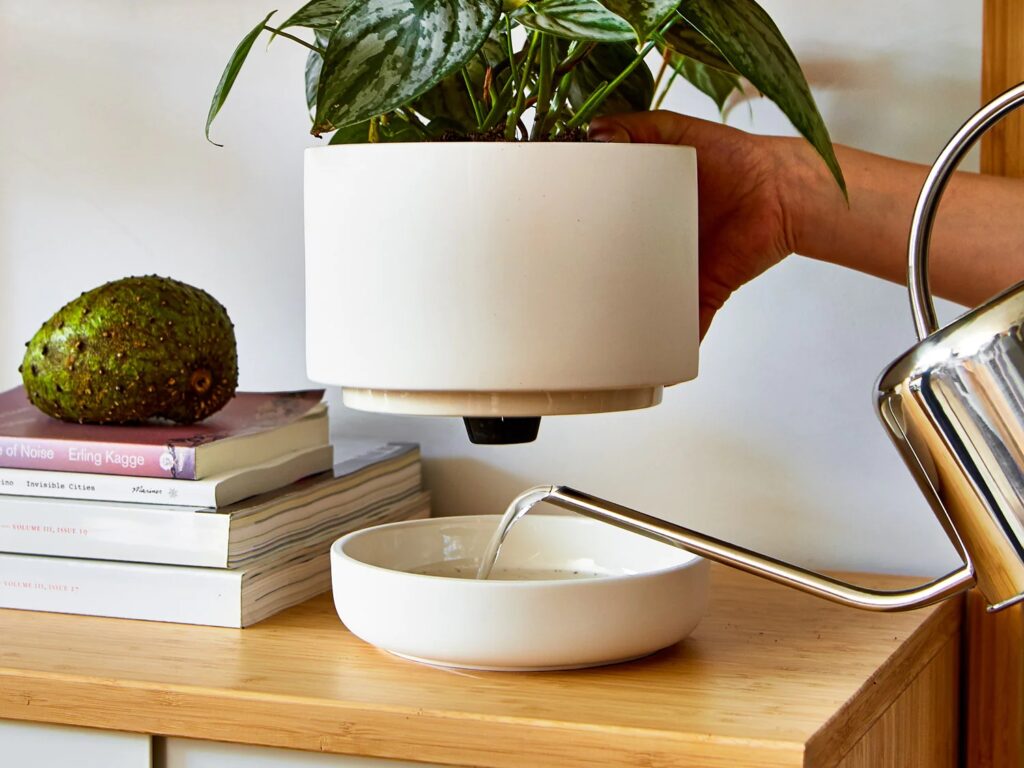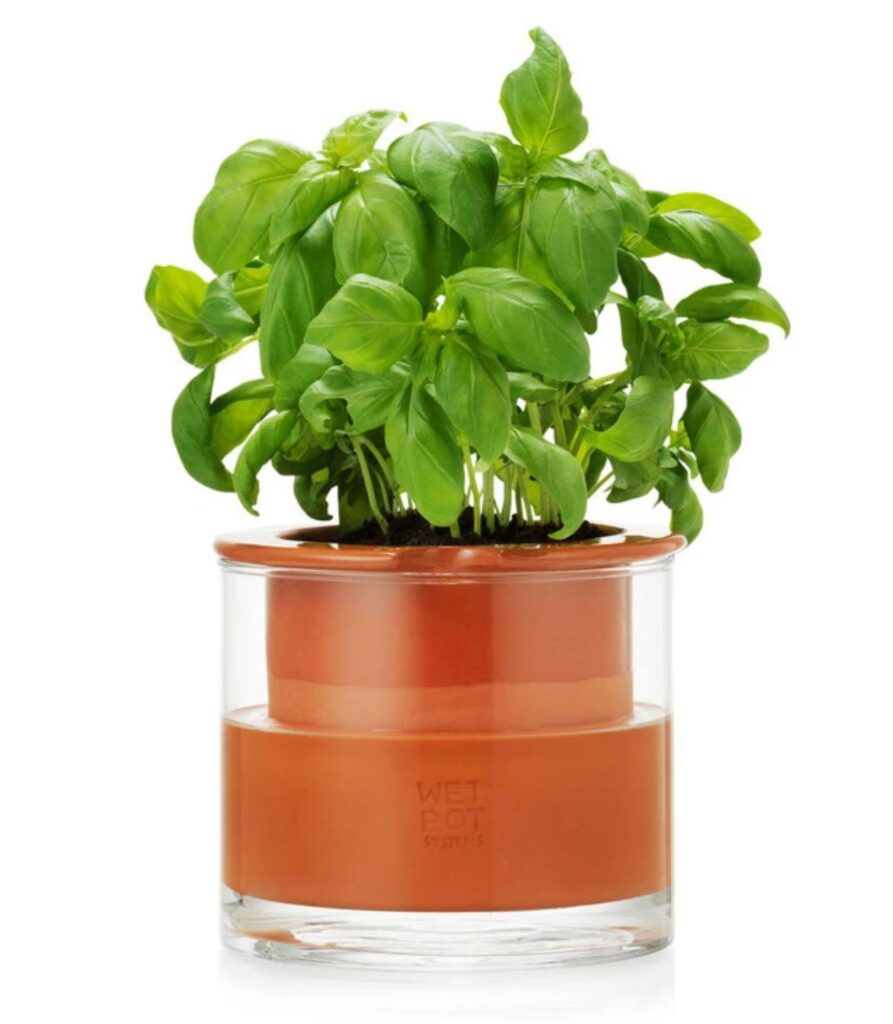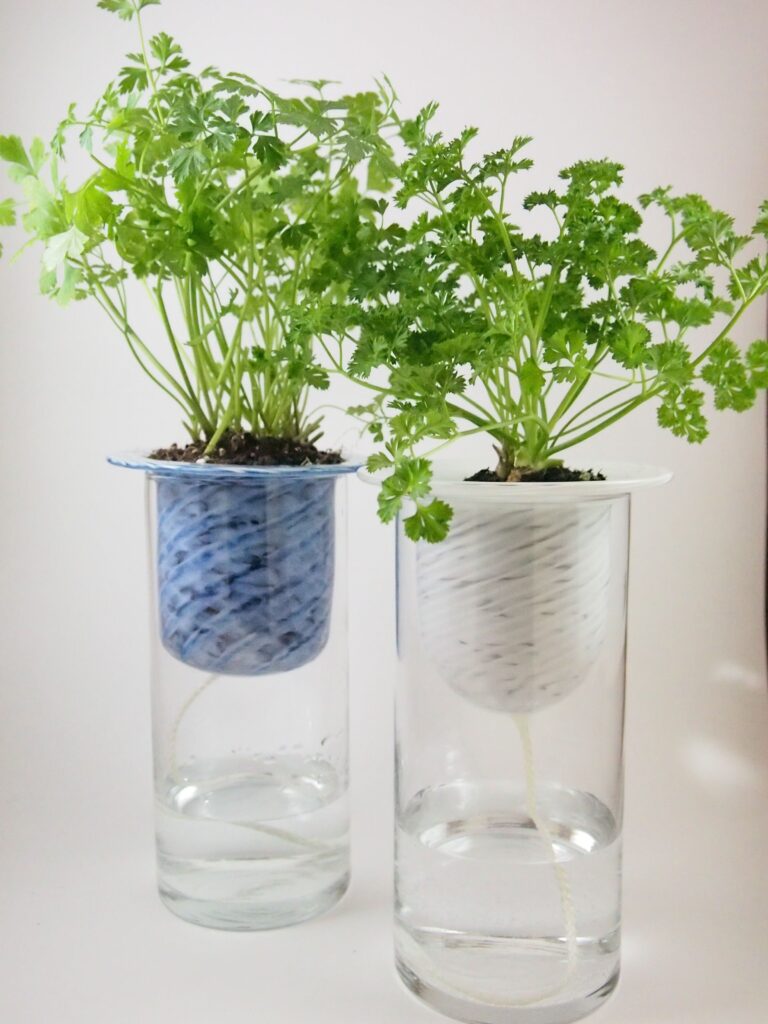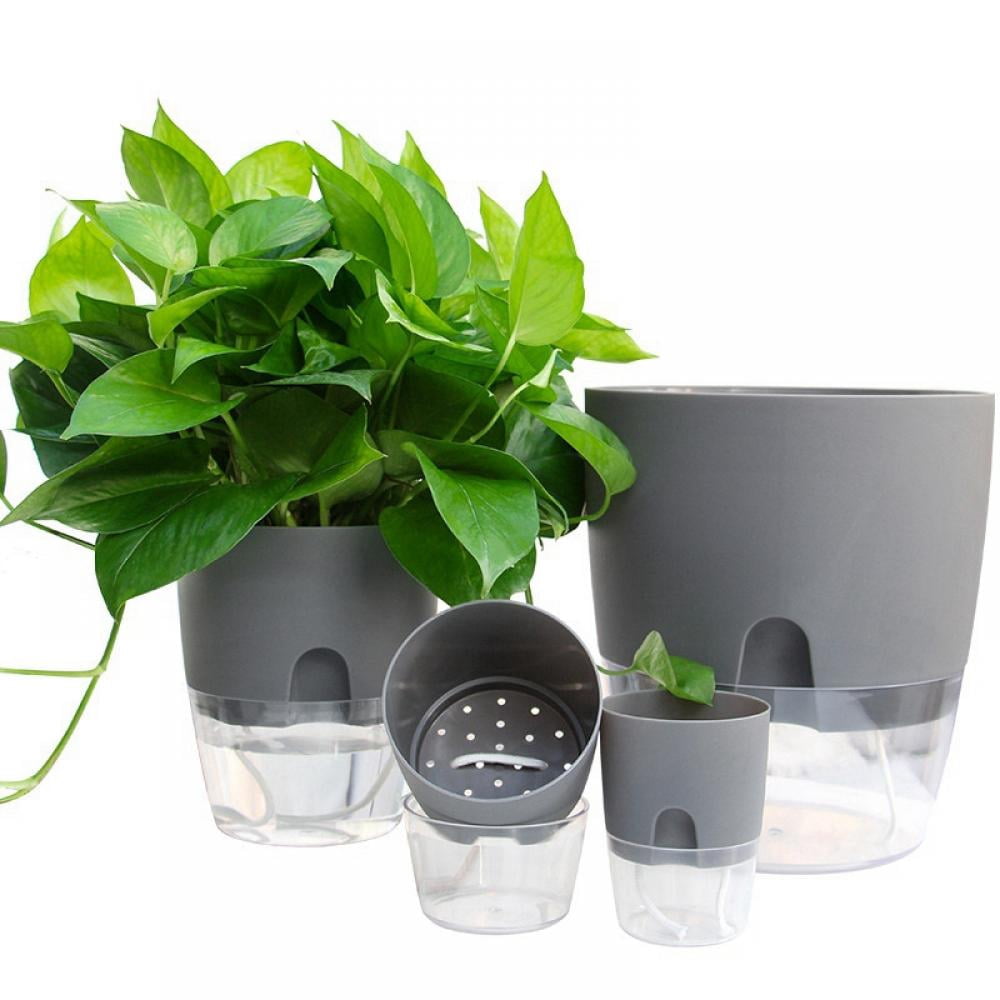Self watering planters are innovative gardening solutions designed to make plant care more convenient and efficient. These planters utilize a reservoir system to provide a consistent water supply to plants, reducing the need for frequent watering and minimizing the risk of overwatering or underwatering.
In this article, we will explore the features, benefits, and considerations of these planters, shedding light on how they work and why they have become popular among both novice and experienced gardeners.

How Self-Watering Planters Work?
Recently, self-watering pots have become fairly popular. It makes sense that the green sector has responded with new strategies and technologies to keep plants healthy and growing, given the rise in green thumbs and houseplant aficionados keen to maintain their gardens and plants.
With a reservoir and irrigation, a self-watering planter provides your plants with water at the roots so they may take their time drinking. It’s also a fantastic option for plant enthusiasts and gardeners who might not be able to, or perhaps forget, to water their plants on occasion.
Self watering planters incorporate a simple yet effective design that allows plants to draw water as needed. The key components of these planters include a water reservoir, a wicking system, and a soil chamber.
Water Reservoir
The water reservoir is located at the base of the planter and is typically separated from the soil by a barrier. It can be a built-in compartment or a detachable unit, depending on the planter’s design.
The reservoir stores water, ensuring a constant supply for the plants. This is particularly beneficial in preventing drought stress and promoting healthy growth.
Wicking System
A wicking system connects the water reservoir to the soil above. This system consists of wicks or capillary tubes that transport water upward, allowing the soil to absorb moisture as needed.
The capillary action of the wicking system ensures that water draws up into the root zone of the plants, maintaining consistent soil moisture levels.
Soil Chamber
The soil chamber houses the plant and is situated above the water reservoir. It contains the growing medium (soil or potting mix) in which the plant’s roots are embedded.
As the soil dries out, the wicking system replenishes moisture from the water reservoir, preventing the soil from becoming excessively dry.
Features of Self-Watering Planters
Water Level Indicator
Many of these planters come equipped with a water level indicator, allowing gardeners to monitor the amount of water in the reservoir easily. This feature helps prevent both overwatering and underwatering.
Modular Design
Some of these planters have a modular design, enabling gardeners to expand or customize their planting space. This flexibility is particularly useful for those with limited space or those looking to create a unique garden layout.
Material Variety
These planters are available in various materials, including plastic, ceramic, and metal. This variety allows gardeners to choose planters that match their aesthetic preferences while benefiting from the self-watering functionality.
Different Sizes and Shapes
These planters come in a range of sizes and shapes, catering to different types of plants and spaces. From small, compact options for indoor herbs to large, decorative planters for outdoor use, there’s a self-watering planter suitable for every need.
Long-Lasting Moisture
The self-watering feature ensures that plants receive a continuous water supply, even during periods of neglect or absence. This is especially advantageous for busy individuals or those who may forget to water their plants regularly.

Benefits of Self-Watering Planters
- Consistent Moisture – One of the primary benefits of these planters is their ability to provide consistent moisture to plants. This helps prevent fluctuations in soil moisture levels that can stress plants and negatively impact their health.
- Water Efficiency – They can reduce water wastage by delivering water directly to the plant’s root zone. This targeted approach ensures the benefit of both the plants and the environment.
- Reduced Maintenance – With these planters, the frequency of manual watering is significantly reduced. This makes them an excellent choice for individuals with busy schedules or those who may not have the time to water their plants daily.
- Suitable for Various Environments – These planters are versatile and can be used in various environments, including indoor spaces, balconies, patios, and gardens. Their adaptability makes them a popular choice for urban gardening and small-space gardening.
- Prevention of Overwatering – Overwatering is a common issue in traditional planters, leading to root rot and other plant health problems. These planters help mitigate this risk by delivering water in controlled amounts, preventing excess water accumulation.
Considerations When Using Self-Watering Planters
- Soil Selection – The choice of soil or potting mix is crucial for the success of self-watering planters. It should be well-draining to facilitate the capillary action of the wicking system while retaining enough moisture to keep the plants hydrated.
- Sunlight Requirements – While these planters can help maintain soil moisture, it’s essential to consider the sunlight requirements of the plants. Ensure that the planter is in an appropriate location that receives the right amount of sunlight for the specific plants you are growing.
- Choosing the Right Size – Selecting a planter of the appropriate size is important for the well-being of the plants. Ensure that the planter provides enough space for the plant’s roots to grow and that it accommodates the plant’s mature size.
- Cleaning and Maintenance – Regular cleaning of the planter, especially the water reservoir, is essential to prevent the growth of algae or the buildup of minerals. Additionally, periodically checking the wicking system and soil condition ensures optimal performance.
- Plant Selection – While these planters can support a variety of plants, it’s important to choose plants with similar water and sunlight requirements when grouping them. This ensures that all plants in the planter thrive under similar conditions.

FAQs
Do self watering planters really work?
Vegetables, herbs, annuals, and perennials are among the many plants that can flourish in self-watering pots. Many of these plants can even flourish in such a system. The fact that plants that require extremely moist soil may have trouble with the bottom-up watering mechanism is one drawback of self-watering containers.
How does the wicking system in self-watering planters work?
The wicking system in self-watering planters uses capillary action to draw water from the reservoir to the soil. Capillary tubes or wicks transport water upward. This ensures that the soil remains consistently moist and providing an efficient way to keep plants hydrated.
Can self-watering planters be used for outdoor gardening, and do they work well in various climates?
Yes, these planters are suitable for outdoor gardening. They work well in different climates, helping to regulate moisture levels in the soil. However, it’s essential to consider the specific water and sunlight needs of the plants and choose an appropriate planter size for optimal performance.
Do self-watering planters require any special type of soil or potting mix?
Self-watering planters perform best with well-draining soil or potting mix. The chosen soil should facilitate capillary action, allowing water to move from the reservoir to the root zone efficiently. Regular checks on soil condition and periodic cleaning are recommended for optimal results.
Are there specific plants that thrive particularly well in self-watering planters?
Self-watering planters can accommodate a wide range of plants, but those with similar water and sunlight requirements are ideal when grouping them. Herbs, succulents, and certain flowering plants are popular choices for self-watering planters, providing flexibility for different gardening preferences.
Conclusion
Self watering planters have revolutionized the way people approach gardening. It offers a practical solution for maintaining optimal soil moisture levels and promoting plant health. With their user-friendly design, diverse styles, and water-efficient features, these planters have gained popularity among gardening enthusiasts of all levels of expertise.
Whether used indoors or outdoors, self-watering planters provide a convenient and effective way to nurture plants while reducing the time and effort required for manual watering. As gardening continues to evolve, these planters stand out as a sustainable and accessible solution for individuals looking to cultivate green spaces with ease and efficiency.

